Tipón Engineering: Masterpiece of the Incas
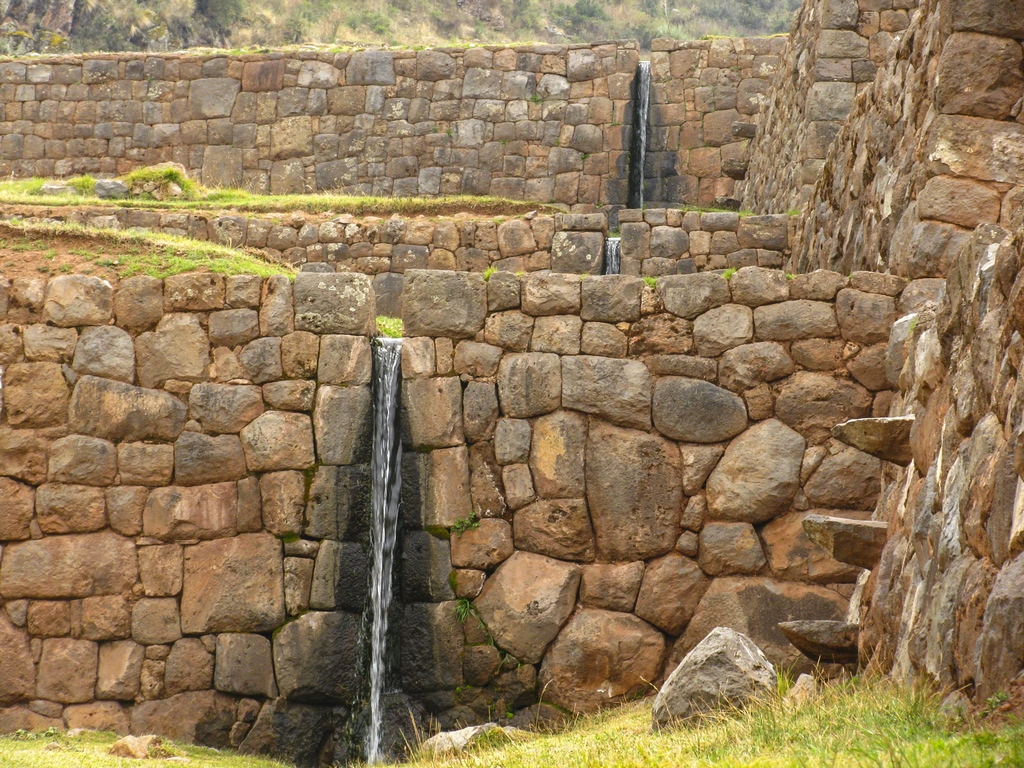

In September 2024, Watershape University organized a tour of Machu Picchu, the famous ruins nestled high in the Peruvian Andes. It was a dynamic journey of personal discovery with numerous fascinating revelations along the way, including the many ways the Incas controlled and utilized water. Here’s a look at one of the tour’s main highlights – a unique and mysterious place known as Tipón.
By Lea Frederick and Dave Peterson
For those who value the lessons of the past, Peru’s Machu Picchu and the surrounding region is a treasure trove of eye-opening discoveries. Our recent trip high in the Andes offered numerous revelations and epiphanies, many of which involved the ingenious ways the Inca celebrated, controlled and utilized water.
A prime example is the settlement of Tipón, one of the most remarkable archaeological sites of the Inca Empire. It’s located about 22 kilometers southeast of Cusco, Peru, at an altitude of around 3,500 meters (11,500 feet) in the scenic Huatanay River Valley. The historic site features a sophisticated system of terraces, channels, fountains, and aqueducts that demonstrate the Incas’ advanced understanding of hydraulics and irrigation engineering.
Tipón is impressive in several ways. It spans several hectares and was built into the steep hillsides of the region. Its structures are composed of finely cut stone, consistent with the precise Incan stone masonry that has amazed and baffled historians and engineers for generations.
The central feature of Tipón is its system of terraces, which are interconnected by a series of intricate water channels. The terraces were used for agricultural purposes, sculpting the mountainside, while making the best use of limited arable land at high altitudes. Tipón’s advanced water management system of aqueducts channels and stone-lined underground pipes distributes water across the site for a variety of purposes.
Historians speculate that Tipón was not only an agricultural center but also a place of spiritual significance, particularly because of the presence of abundant flowing water, which held great religious importance in Inca culture.
HISTORIC HYDROLOGY
Tipón is believed to have been constructed during the reign of the Inca emperor Wiracocha, possibly in the late 14th or early 15th century. The site might have served dual purposes: as an estate for the Inca nobility; and, as a center for agricultural experimentation.
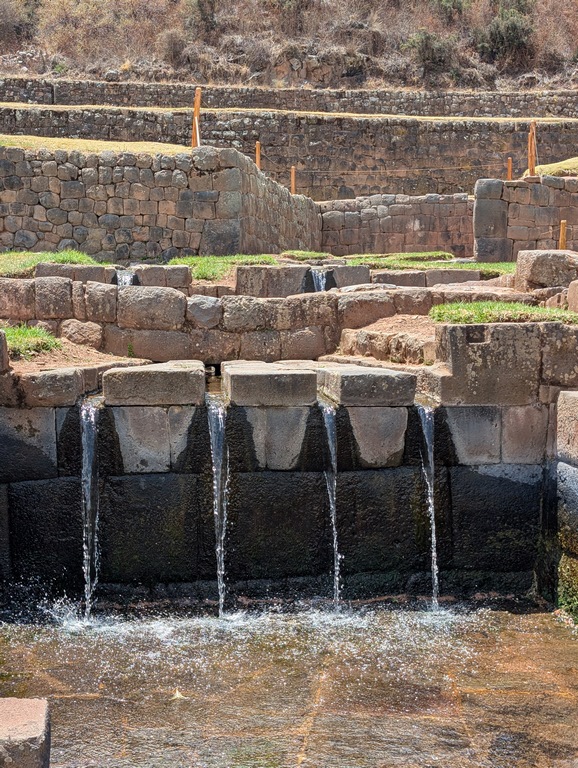
Tipón was abandoned following the collapse of the Inca Empire in the 16th century, after the Spanish conquest. Fortunately, much of the site’s intricate infrastructure has been preserved over the centuries, giving modern scholars and engineers a unique glimpse into the Incas’ level of technical sophistication.
When visiting there, it becomes immediately obvious that managing water was of paramount importance in the Inca civilization; not only as a resource for agriculture and survival, but also as a sacred element. The Incas associated water with life and fertility, often connecting it with their agricultural gods. Water’s sacredness is evidenced in Tipón’s complex system of fountains and ceremonial baths, which were used for religious and ritualistic purposes.
Natural symbolism is abundant throughout the site and, indeed, throughout all of Incan culture. The stone structures at Tipón are carved and assembled to depict sacred spirit animals including the Condor, which represents ascendancy of the heavens, the Puma, a brave and fierce guardian of the earth, and the Serpent, the lurking denizen of the underworld.
The Incas clearly believed that certain water sources were sacred — especially springs. Many irrigation systems were designed not only for practical purposes but also to honor the deities who they believed were responsible for this precious resource.
The terraces at Tipón likely served as a backdrop for rituals related to agricultural cycles, rainmaking, and fertility, blending the practical and spiritual dimensions of water use. Most of the water used in their sacred areas, 60-to-70%, came from natural springs because it would always be free-flowing, and their enemies would never poison it.
The connection between irrigation and religious rituals is evident in the way water flows through ceremonial fountains at Tipón. This was not simply for agricultural irrigation but also for purification rites and offerings to the gods – a physical manifestation of the Incas’ reverence for the natural world.
ANCIENT INNOVATION
The engineering of Tipón’s water system is striking because much of it continues to function to this day, showcasing the Incas’ mastery of long-lasting infrastructure. The precision with which the water channels were designed ensured even, and remarkably efficient, distribution of water without waste or stagnation.
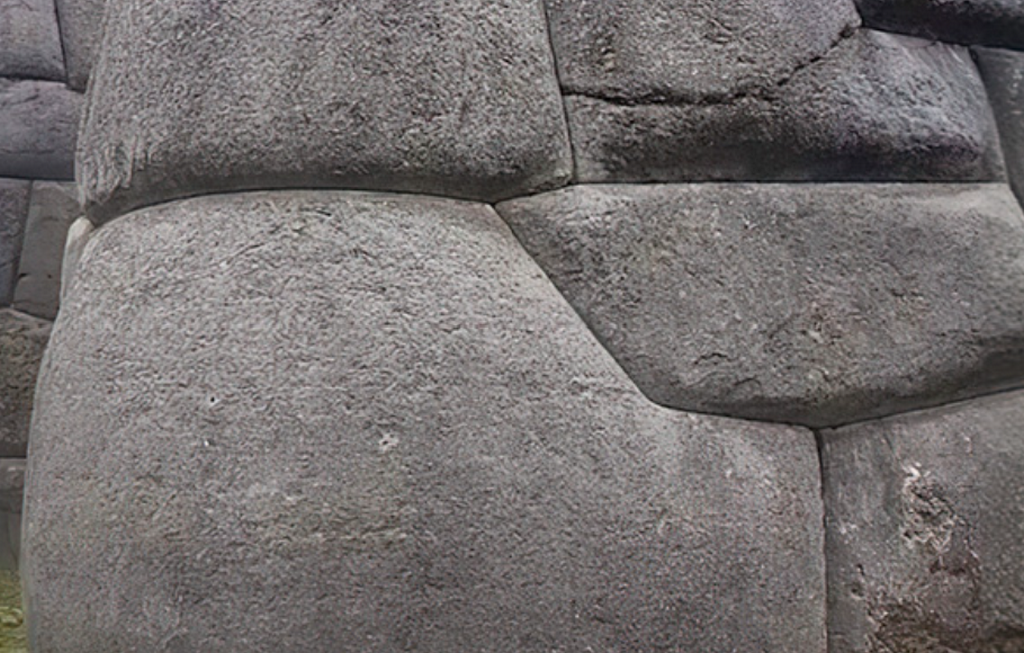
The site’s hydraulic infrastructure was designed to maximize the efficient use of water from natural springs and rainfall.
There are literally miles of carefully constructed stone channels, runnels, basins and weirs. It’s amazing how the stones were so precisely carved and fit together to create watertight structures. In fact, how they did it is the subject of ongoing speculation, with ideas ranging from using ice to precisely fracture the stones, to techniques shared by space aliens.
More grounded explanations suggest Inca craftsmen had a keen understanding of the relative hardness of different stone types and how to create precise and efficient cutting tools.
In terms of their hydrological prowess, they clearly understood the behavior of water, splitting and diverting flows where needed and then recombing them. They knew how to manage water flowing over weirs as it strategically descends from one level to the other. The Inca-watershapers even use stones as gate valves to divert water from one channel to another similar to the three-way valves used in our modern projects.
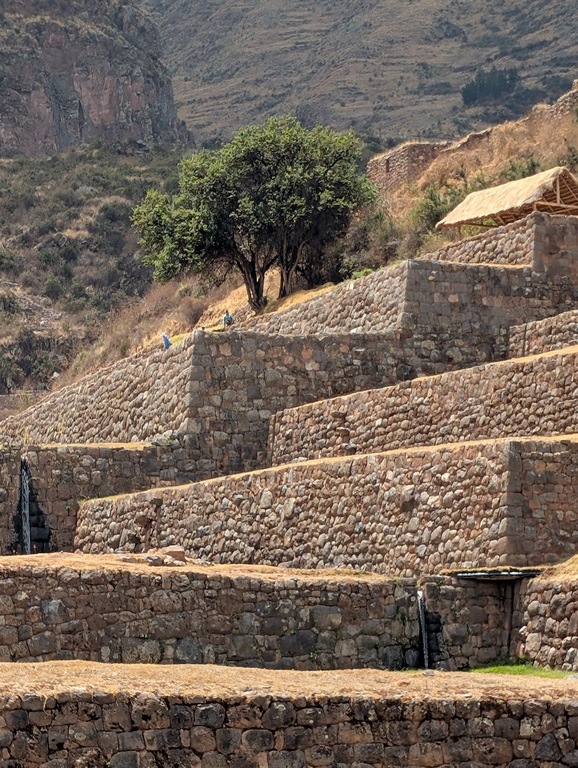
Seemingly everything they did would be extremely challenging using modern technology. It’s truly mind boggling to think these inventive and industrious people were able to pull it all off with no power tools or heavy equipment, all in this inaccessible and incredibly rugged terrain.
Nonetheless, when you go there, the evidence of their successful efforts is found at every turn. Part of their genius was how Tipón was built to fit into the natural landscape, rather than reshaping the land to fit their infrastructure. This approach to designing within ecological constraints is highly relevant to sustainable engineering today.
In many ways, Tipón serves as a profound reminder of the importance of integrating cultural and spiritual values with technological solutions, something that can serve to inspire modern design philosophies.
LINGERING MYSTERIES
While Tipón is a well-preserved example of Inca engineering, several unanswered questions endure. For example, scholars debate whether Tipón was primarily an agricultural site, a royal estate, or a religious center – or perhaps all three.
Even its water source is the subject of conjecture. Though much of Tipón’s water comes from a natural spring, the full extent of the system’s original water sources and how the Inca maintained water flow during the dry season remain unclear. Some hypothesize that more of Tipón’s infrastructure lies underground or unexcavated, awaiting future discovery.
And, there is the aforementioned masonry work. The precise joinery defies explanation, and perhaps always will.
Today, Tipón is a protected archaeological site, and its preservation is vital for understanding Inca engineering, religious practices, and agriculture. Efforts are ongoing to maintain and restore the water channels and terraces, ensuring that this marvel continues to function.
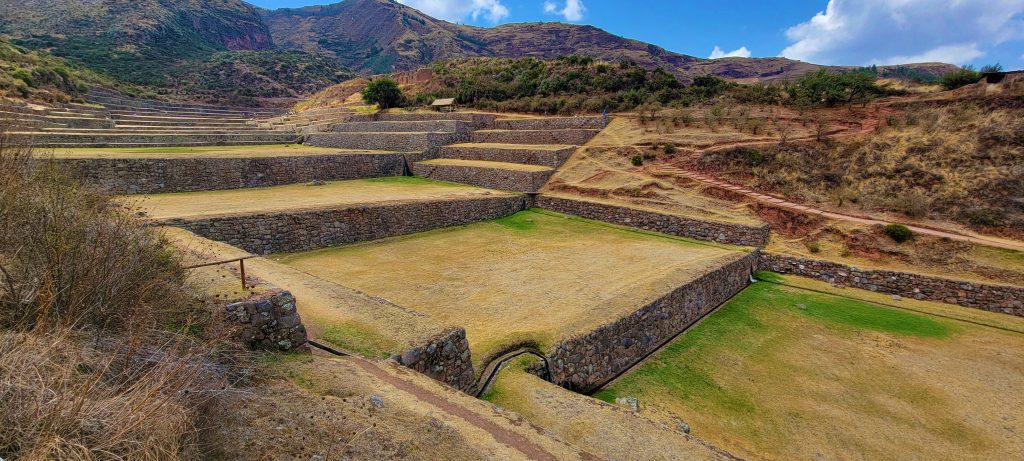
As is true of countless historic sites the world over, climate change, tourism, and natural degradation pose challenges to its long-term preservation. Future conservation efforts must balance public access with the need to protect this fragile, ancient system.
For engineers, historians and the curious at heart, Tipón remains an invaluable site for studying sustainable hydrological practices and the deep connection between the environment, spirituality, and engineering in Inca society. Its enduring infrastructure serves as both a marvel of the past and an inspiration for future innovations.
On behalf of everyone on the tour and Watershape University, we’d like to thank our tour guide Washington Tapia, a world traveler, historian and widely read author. His detailed explanations, references, reverence and enthusiasm were nothing short of amazing and inspiring. Much of the above text is based on his vivid descriptions and insights
This discussion was also based on the wonderfully detailed book, “Tipon: Water Engineering Masterpiece of the Inca Empire” by Kenneth R. Wright, Gordon Francis McEwan and Ruth M. Wright, ASCE Press, 2006.
Lea Frederick, IWI, Watershape University Dean of Culture, is owner and design specialist for Vue Custom Pools & Design, a watershaping firm located in Greensboro, NC. In September 2022, she published a WaterShapes article about her first trip to Machu Pichu, “Elevating Adventure”. https://watershapes.com/elevaing-adventure/
David J. Peterson, P.E, IWI, is co-founder of Watershape University and president of Watershape Consulting, Inc.









